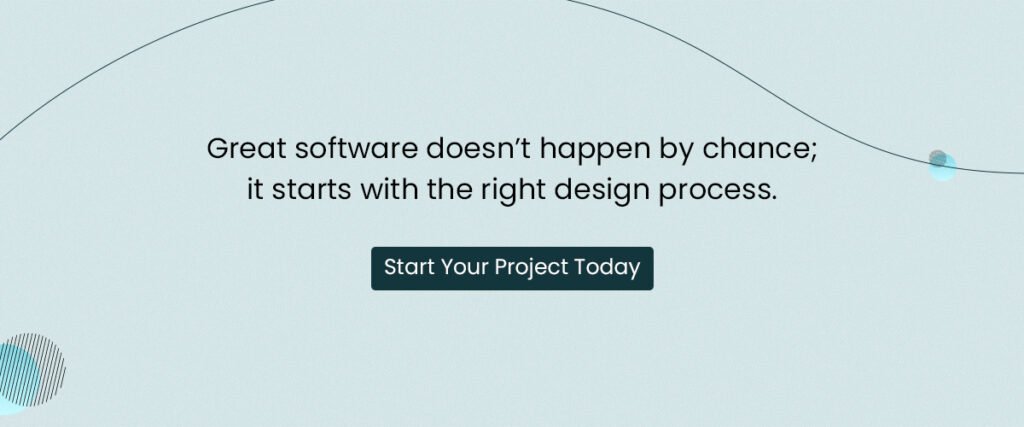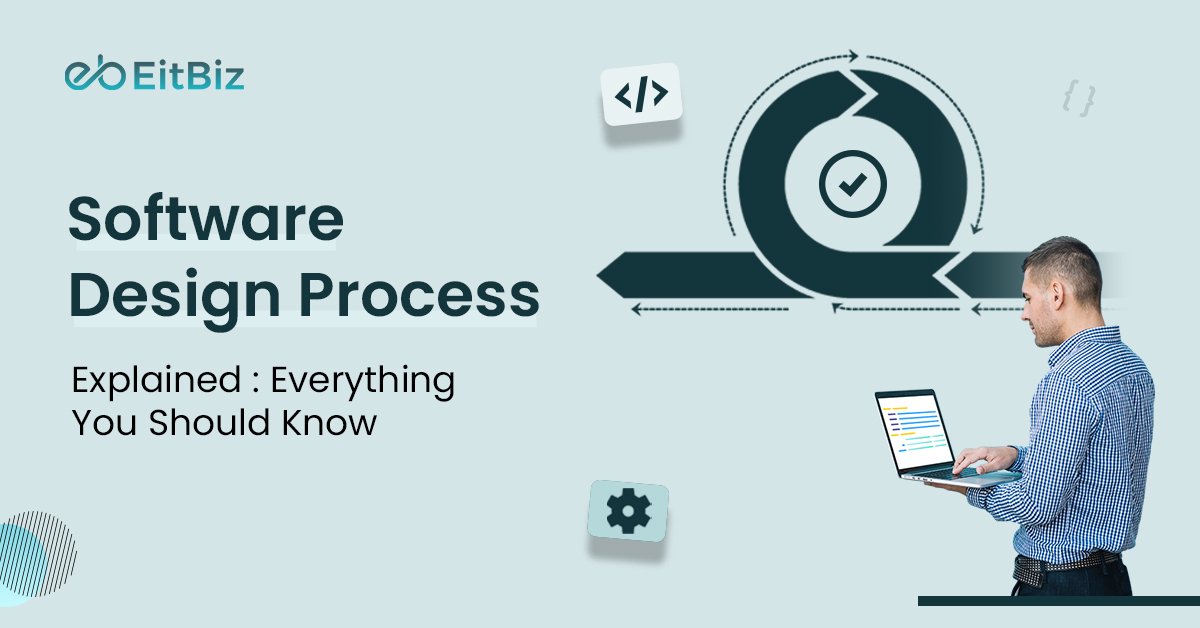2026 is around the corner!
And guess what- it’s pretty hard to imagine any business without dedicated software, right?
Well, that’s the point exactly! But here’s the catch!
Though many businesses are trying to get into software development, not everyone can succeed.
But why?
The answer lies in the fact that they forget one important aspect, i.e., “Agile software design process”!
Did you know?
The global software development market is expected to go beyond $898 billion by 2029. (Source: Statista).
Sounds interesting, doesn’t it?
But now the question arises – What is the best way to approach software design? What is the design phase of the software development life cycle?
Without further ado, let’s dive in!
What is Software Designing?
To put it simply, Software design is the process of planning and structuring a software system before actual coding begins. It involves defining the architecture, components, interfaces, and data flow to ensure the software meets user requirements while being efficient, scalable, and maintainable. Designers use principles like modularity, abstraction, and reusability to break down complex systems into manageable parts. By doing so, they create a blueprint that guides developers in writing clean, structured, and error-resistant code.
In practice, software design goes beyond technical diagrams; it bridges user needs with engineering solutions. Professionals apply design methodologies such as object-oriented design, structured design, or agile modeling to align the system’s functionality with business goals. They also factor in performance, security, and usability to ensure the end product is reliable and user-friendly.
A strong design phase reduces development risks, minimizes costly rework, and lays the foundation for long-term software success.
What are the Elements of a Software Design System?
1. Architecture Design
Defines the overall structure of the software, including how different modules, components, and layers interact. It sets the foundation for scalability, maintainability, and performance.
2. Data Design
Focuses on how data is stored, processed, and managed within the system. This software design process element includes database schemas, data flow diagrams, and data integrity rules to ensure accuracy and efficiency.
3. Interface Design
Covers both user interfaces (UI) and system interfaces. It specifies how users will interact with the system and how different software components or external systems communicate.
4. Component Design
Breaks the system into individual components or modules, each with specific functionality. This ensures modularity, reusability, and easier debugging or upgrading.
5. Algorithm Design
Defines the step-by-step logical procedures the system uses to process data and execute tasks. Efficient algorithm design improves system speed and resource usage.
6. Security Design
Incorporates measures like authentication, authorization, and data encryption to protect the system from vulnerabilities and ensure data privacy.
7. Performance Design
Considers factors like response time, resource optimization, and scalability to ensure the software can handle varying loads without degradation.
8. Usability Design
Ensures the system is user-friendly, intuitive, and aligned with user expectations. It includes layout, accessibility, and user experience (UX) considerations.
What is the Software Design and Development Process?
The software design and development process is a structured approach that guides how software is planned, built, tested, and maintained. This process typically involves the following stages:
#1. Requirement Analysis
In the software design and development process, the first step is analyzing user needs and business requirements. Teams gather insights from stakeholders, document expectations, and identify core functions the software must fulfill. A clear requirement analysis avoids confusion later, sets measurable goals, and forms the foundation for a successful design process in software engineering.
#2. Planning the Design Phase
The design phase of the software development life cycle transforms requirements into actionable plans. Designers map out system architecture, data models, and workflows. They decide on technologies, interfaces, and security protocols to be used. This step emphasizes clarity and detail, helping ensure the software meets performance expectations while remaining scalable and maintainable in the long run.
#3. Creating Architectural and Component Designs
During the software design process, professionals divide the system into smaller components and define their relationships. This involves both architectural design (overall structure) and component design (specific modules). A modular approach enables reusability, easy debugging, and faster updates. It is considered the best way to approach software design for complex and evolving systems.
#4. Adopting Agile Practices
Many organizations now prefer the agile software design process because it allows iterative improvements. Instead of finalizing everything up front, teams design, build, and test in short cycles. This method ensures flexibility, quick responses to client feedback, and faster delivery of functional software. It aligns perfectly with modern businesses that face rapidly changing requirements.
#5. Implementation and Coding
After completing the design process in software engineering, the design blueprint transitions into actual coding. Developers use programming languages and frameworks best suited to the project. By following design specifications strictly, they ensure the system’s functionality matches what was initially planned, reducing the risk of costly rework during later stages of development.
#6. Testing and Quality Assurance
A crucial step in the software design and development process is testing. Teams conduct unit tests, integration tests, and system tests to validate functionality and performance. This phase ensures that the application is free from critical errors, secure against vulnerabilities, and optimized for usability, delivering a reliable product to end-users.
#7. Deployment and Maintenance
Once testing is complete, the software is deployed into the production environment. However, the design phase of the software development life cycle doesn’t end here. Continuous monitoring, updates, and bug fixes are essential for long-term success. Maintenance ensures that the software adapts to new technologies and changing customer demands.
#8. Using the Best Software for Software Design
For efficiency, teams rely on tools and platforms considered the best software for software design. Examples include UML modeling tools, wireframing software, and architecture design platforms. These tools help create detailed visual models, streamline collaboration, and reduce errors. Choosing the right design tools accelerates development and improves communication among stakeholders.

What are the Mistakes to Avoid During the Software Design Lifecycle?
1. Ignoring User Requirements
Failing to understand or properly document user needs often results in a product that doesn’t solve the actual problem. Always validate requirements with stakeholders before starting the design.
2. Overcomplicating the Design
Adding unnecessary features or complex structures makes the system harder to build, maintain, and scale. Stick to simplicity and focus on solving the core problem effectively.
3. Lack of Modularity
Designing without modular components leads to tightly coupled systems that are difficult to debug, test, or upgrade. Ensure the design follows modular and reusable principles.
4. Neglecting Scalability
Not planning for future growth can cause performance issues when user demand increases. Build with scalability in mind, even if the initial system is small.
5. Poor Data Design
Ignoring proper database structure, data flow, and integrity checks can lead to bottlenecks, redundancy, or data loss. Invest time in solid data modeling.
6. Overlooking Security
Failing to integrate security measures like authentication, encryption, and access control during design makes the software vulnerable to threats. Security must be built in, not an afterthought.
7. Skipping Documentation
Not documenting design decisions and structures makes it difficult for future developers to understand and maintain the system. Maintain clear diagrams, notes, and guidelines.
Final Thoughts
So, there you have it! That’s a wrap to the software design process in 2025! Designing software is more than just writing code; it’s about creating a solid foundation that balances functionality, usability, scalability, and security. A well-thought-out software design process minimizes risks, reduces costs, and ensures that the final product truly delivers value to its users.
If you’re looking for a trusted partner to bring your software ideas to life, EitBiz can help. With expertise in software design, development, and digital transformation, our software development experts deliver solutions that are tailored to your business goals and built for growth. Do you want the best design process in software engineering? If so, connect with EitBiz and make a captivating software design that engages and drives conversions.
-

Sandy K is the dynamic and visionary Director at EitBiz. With a rich tapestry of experience spanning almost 15 years, Sandy has cultivated a unique, global perspective that he brings to the forefront of EitBiz’s operations.
View all posts
Visit Linkedin




